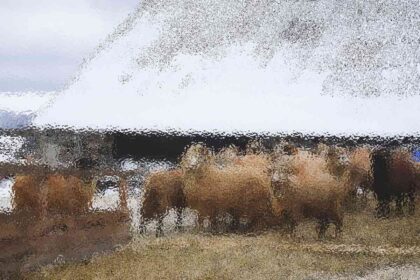Introduction
On a chilly winter morning in the Black Forest region of Germany, a young artisan named Greta spread a thick woollen mat across her wooden floor. It wasn’t just any mat; it was made by hand from natural wool fibres, passed down through generations of traditional craft. As the fire crackled beside her, she watched how the soft, insulating texture of the mat kept her feet warm and her home cozy. This was the simple beauty of Wollmatten, where craftsmanship, comfort, and sustainability meet in harmony. From humble beginnings in rural workshops to becoming a symbol of eco-friendly living across Europe, the story of these wool mats reflects a growing global movement toward natural, sustainable materials. Let’s explore the fascinating journey, uses, and enduring benefits of these beautiful wool creations.
Understanding the Essence of Wollmatten
What Are Wollmatten?
Wollmatten are traditional wool mats crafted from pure sheep’s wool. Their primary function is to provide warmth and comfort while enhancing interior aesthetics. Known for their natural softness and durability, these mats can be found in homes, yoga studios, and even high-end spas due to their calming and sustainable appeal.
The Natural Origin
Each mat begins with raw wool, a renewable resource obtained from sheep shearing. After cleaning and carding, the fibres are felted or woven into thick, breathable mats that regulate temperature and resist dirt naturally. This eco-conscious process ensures minimal environmental impact compared to synthetic floor coverings.
The Cultural and Historical Roots
From Tradition to Modern Design
The art of wool crafting dates back centuries. Early European settlers and mountain dwellers used wool mats for insulation against cold floors. Over time, artisans refined these designs, combining practicality with cultural patterns that represented local heritage. Today, modern Wollmatten keep the same spirit alive, merging timeless craftsmanship with contemporary design aesthetics.
Symbolism and Craftsmanship
In many regions, wool mats symbolise warmth, care, and protection. They are often handmade using techniques passed down through families, where every strand tells a story of patience and artistry. This connection between maker and material gives each mat a unique identity, making it much more than a simple home accessory.
The Benefits of Choosing Natural Wool Mats
Eco-Friendly and Sustainable
Wool is one of the most sustainable fibres available. It’s renewable, biodegradable, and requires fewer chemicals during production. Unlike synthetic materials, wool mats do not release microplastics into the environment, making them a greener choice for eco-conscious consumers.
Durability and Longevity
High-quality wool mats can last for decades when properly cared for. Their natural elasticity helps them retain shape even after years of use, while the lanolin in wool acts as a built-in protector against stains and moisture.
Comfort and Health Benefits
Wool fibres naturally regulate temperature, keeping spaces warm in winter and cool in summer. They also improve indoor air quality by trapping dust particles and absorbing excess humidity, making them ideal for people with allergies or asthma.
Applications of Wool Mats in Modern Life
Home Interiors
Wool mats add an instant sense of warmth and texture to any living space. Whether used as floor rugs, wall hangings, or decorative layers on furniture, they enhance the comfort and visual appeal of interiors. Their neutral tones and soft patterns blend effortlessly with both rustic and modern décor.
Yoga and Meditation Spaces
Many yoga enthusiasts prefer wool mats over synthetic ones due to their grounding energy and natural insulation. The texture of wollmatten provides stability and comfort during meditation or relaxation practices, helping practitioners connect with the earth more organically.
Eco-Friendly Architecture and Design
Designers and architects are increasingly integrating wool mats into eco-conscious interiors. These mats contribute to natural sound insulation, energy efficiency, and a soothing ambience, aligning perfectly with the principles of sustainable architecture.
The Making Process: A Blend of Art and Science
Step 1: Sourcing and Cleaning Wool
The process begins with ethically sourced wool. Shearers carefully remove fleece from sheep, ensuring the animals are unharmed. The wool is then washed to remove natural oils and impurities.
Step 2: Carding and Felting
Next, the cleaned wool is carded and combed into long, aligned fibres. Depending on the mat’s design, artisans may use felting, pressing and bonding fibres together with moisture and friction or weaving techniques.
Step 3: Finishing and Designing
Finally, the mats are dyed using natural colours or left undyed to preserve their organic tones. Embroidery or patterns may be added for aesthetic value, reflecting regional artistry and cultural influences.
How to Maintain and Care for Wool Mats
Cleaning Tips
- Regular vacuuming prevents dust accumulation.
- Spot clean using mild detergent and cold water.
- Avoid harsh chemicals, as they can damage wool fibres.
- Air dry naturally; never expose wool to direct heat.
Storage and Longevity
Store wool mats in a dry, ventilated area to prevent moth damage. Using lavender sachets or cedarwood can act as a natural deterrent. With proper care, these mats can easily become cherished heirlooms passed down through generations.
Why Sustainability Matters
The Global Shift Toward Eco Living
In recent years, sustainability has become more than a trend; it’s a responsibility. People are realising the long-term impact of consumer choices on the planet. Natural fibres like wool represent a step toward reducing environmental damage and promoting a circular economy.
Supporting Ethical Artisans
When consumers purchase authentic Wollmatten, they support traditional artisans and small-scale producers who uphold eco-friendly practices. This not only preserves cultural heritage but also promotes fair trade and community livelihoods.
Design Trends and Aesthetic Inspiration
Scandinavian Minimalism
Wool mats complement minimalist interiors with their neutral tones and soft textures, adding warmth without overwhelming simplicity.
Bohemian and Rustic Styles
For homes that embrace natural beauty, these mats serve as both decorative and functional elements. Their handcrafted appearance adds authenticity and character to any setting.
Modern Luxury
Even in contemporary homes, wool mats create a feeling of quiet luxury, blending softness, sustainability, and timeless design.
Comparing Wool Mats with Synthetic Alternatives
| Feature | Natural Wool Mats | Synthetic Mats |
|---|---|---|
| Material | Renewable, biodegradable | Non-renewable, plastic-based |
| Lifespan | Long-lasting | Shorter lifespan |
| Comfort | Soft, breathable | Often coarse, non-breathable |
| Environmental Impact | Low | High |
| Maintenance | Easy, natural | Requires chemical cleaning |
The comparison highlights why wool mats are increasingly favoured by eco-conscious homeowners worldwide.
Tips for Buying Authentic Wollmatten
- Look for certified natural wool labels.
- Check for handmade or locally produced options.
- Avoid overly cheap imitations. Genuine mats require time and craftsmanship.
- Ask about the source of the wool to ensure ethical production.
These small checks ensure that you invest in a product that truly embodies quality and sustainability.
Conclusion: Embracing the Warmth of Tradition
In an era of mass production and synthetic living, wool mats stand as a reminder of nature’s quiet elegance and human craftsmanship. Whether used for comfort, design, or mindfulness, they bring a touch of authenticity and care into our daily lives. Wollmatten are not just decorative items; they are symbols of heritage, sustainability, and connection, bridging the warmth of the past with the mindfulness of the present. Choosing them means choosing comfort with conscience, and that’s a story worth continuing.








